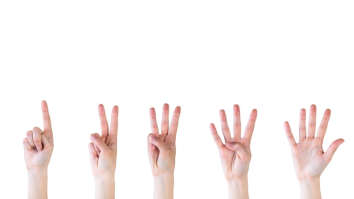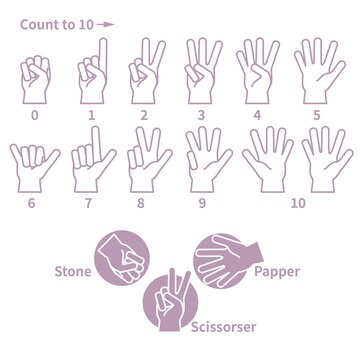
The History of BSL
British Sign Language, or BSL, is the first language of many deaf people in theUK. This visual-gestural language uses space, orientation, and movement of the hands, body, face, and head to communicate.
The history of BSL is long and complex, with influences from a variety of sign languages including American Sign Language (ASL), French Sign Language (LSF) and Signed English. The first recorded use of BSL was in 1644, when a deaf man named Thomas Braidwood founded the first ever school for the deaf in Britain. Since then, BSL has undergone many changes and is now recognised as a language in its own right by the British government.
Over 150,000 people are thought to use BSL in the UK, which is a significant increase in recent years. Both the demand for BSL classes and the need for qualified BSL interpreters are growing.
The British Sign Language Dictionary, which was released in 2010, is a useful tool for BSL learners and enthusiasts.
The history of BSL is a rich and fascinating one, which continues to evolve alongside the needs of deaf people in Britain today.
How to Sign the British Sign Language Numbers 1-10
Follow the steps below to learn how to sign the British Sign numbers 1-10.
- Start by holding your left hand up in front of you, with the palm facing outwards. The number one is shown by holding up your index finger
- Use your right hand to trace the outline of the number 1 in the air, starting at the top and then moving down to the bottom.
- Make sure that you keep your left hand still throughout the whole process.
- Repeat this process for the numbers 2-10.
- Once you have finished, you should have a clear understanding of how to sign the British Sign Language numbers 1-10.

Examples of BSL Numbers
Some examples of BSL numbers are provided below.
- Unlike English, where the word "11" is a unique word and not just a combination of the words "ten" and "one", in BSL the number eleven is signed by combining the signs for those numbers.
- The number 12 is signed by combining the signs for "ten" and "two" and for 13 the signs are "ten" and "three".
- The numbers 14 through 19 are all signed by combining the sign for "ten" with the sign for the appropriate number (fourteen = ten + four, fifteen = ten + five, etc.).
- The number 20 is formed by combining the signs for "two" and "ten." As with the signs for "three" and "ten," "four" and "ten," and "five" and "ten," respectively, the numbers 30, 40 and 50 are formed by combining these two signs. 60 and 70 follow the same format.
- The signs for the numbers 21 through 29 in BSL are all created by adding the sign for "two" to the sign for the relevant number (e.g., twenty-one is two + ten + one, twenty-two is two + ten + two, etc.).
- The numbers 31 through 39, you must combine the sign for "three" with the relevant number (i.e., 31 = 3 + 10 + 1, 32 = 3 + 10 + 2, etc.).
- In BSL, the numbers 41 through 49 are all signed by combining the sign for "four" with the sign for the appropriate number (forty-one = four + ten + one, forty-two = four + ten + two, etc.).
- The signs for the numbers 51 through 59 are all created by adding the sign for "five" to the relevant number (for example, 51 = 5 + 10 + 1, 52 = 5 + 10 + 2, etc.).
- The numbers 61 through 69 are all signed by combining the sign for "six" with the sign for the appropriate number (sixty-one = six + ten + one, sixty-two = six + ten + two, etc.).
Learning Resources for BSL Numbers
Here are a few resources to help you learn more about BSL numbers, whether you're a beginner or an expert.
The British Sign Language Corpus: This online resource contains over 4,000 videos of BSL users from across the UK, making it an invaluable resource for research and study.
The BSL Zone: This website is packed with information on all aspects of BSL, including numbers. You can watch videos, take quizzes, and even play games to test your knowledge.
Hands On Numbers: Elisabeth Wiener's book is a fantastic resource for learning more about BSL numeral signs. It's ideal for beginners, with clear illustrations and step-by-step instructions.
British Sign Language: An Introduction: This comprehensive guide to BSL covers everything from the basics of signing numbers to more advanced topics such as fingerspelling and sign grammar. Written by experts in the field, it's an essential resource for anyone interested in learning more about this fascinating language.

Benefits of Learning British Sign Language Numbers
There are many benefits to learning British Sign Language (BSL) numbers. Here are some of the top benefits of learning BSL numbers:
- Improve your numeracy: Learning BSL numbers can help you understand mathematical concepts better. This is because visualizing the numbers will require you to use your spatial awareness. It is a great way to develop your numeracy skills.
- Meet new people: When you learn BSL numbers, you will also be able to meet new people who use this language. You can easily increase your social circle and make new friends.
- Improve your job prospects: Because BSL is becoming more popular, there is a growing demand for people who can communicate in it. If you're looking for a new job or want to advance your career, learning BSL numbers could put you ahead of the competition.
- Boost your brain power: Learning a new language has been shown in studies to improve brain function. This is because it improves your memory and problem-solving abilities. By learning BSL numbers, you can give your brain a good workout.
- Improve your communication skills: Learning BSL numbers improve your communication skills as well. It is an effective mode of communication that can be used for both verbal and nonverbal cues in both personal and professional settings.
Conclusion
So, here you have it! Hope, you are now well aware about British sign language numbers. Learning BSL numbers can be a fun and rewarding experience. If you are looking for a fun and rewarding way to learn a new skill, why not try learning BSL numbers? Let’s get started!
 Never miss a story from us, get weekly updates in your inbox.
Never miss a story from us, get weekly updates in your inbox.